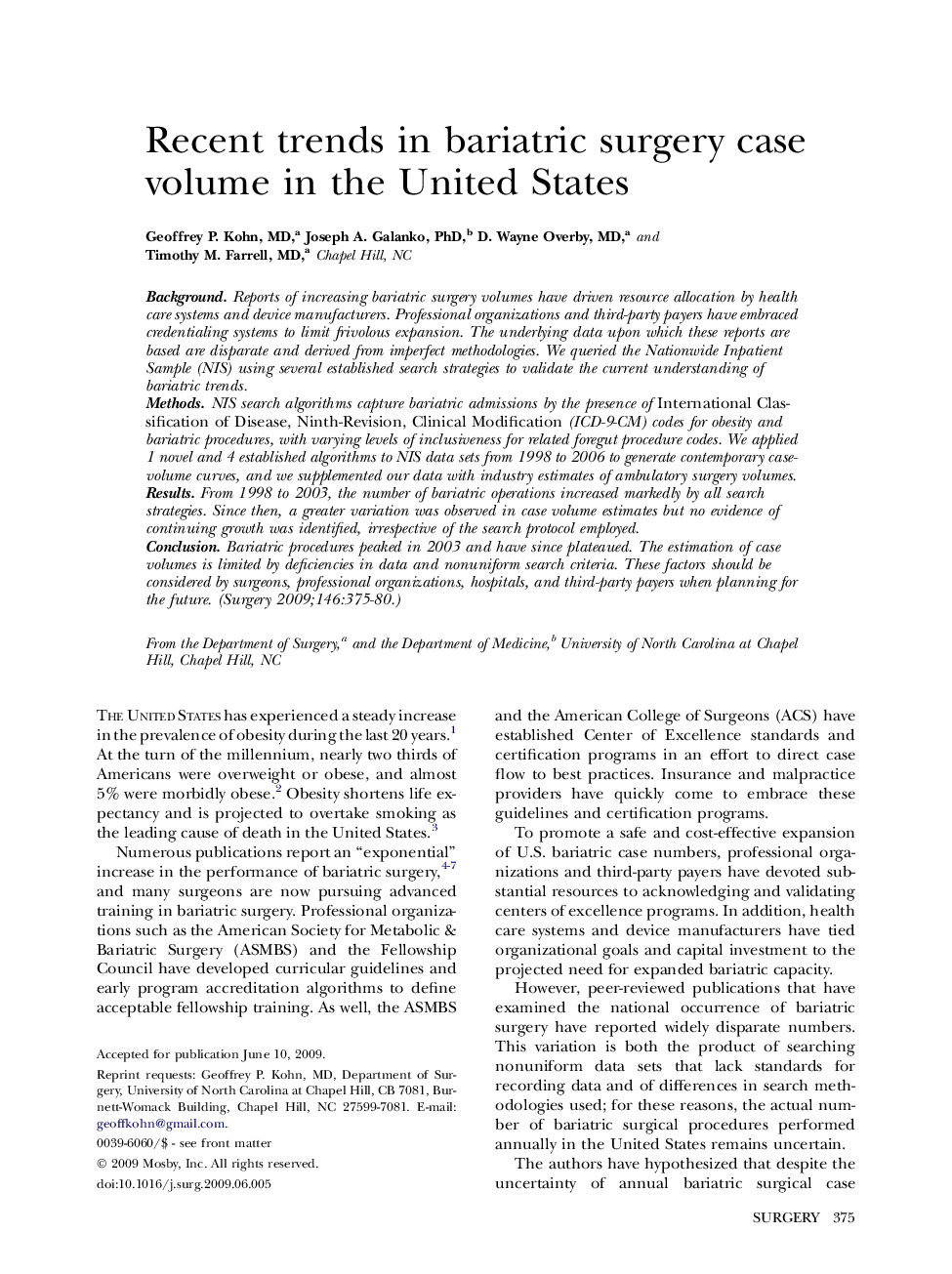| Article ID | Journal | Published Year | Pages | File Type |
|---|---|---|---|---|
| 4309406 | Surgery | 2009 | 6 Pages |
BackgroundReports of increasing bariatric surgery volumes have driven resource allocation by health care systems and device manufacturers. Professional organizations and third-party payers have embraced credentialing systems to limit frivolous expansion. The underlying data upon which these reports are based are disparate and derived from imperfect methodologies. We queried the Nationwide Inpatient Sample (NIS) using several established search strategies to validate the current understanding of bariatric trends.MethodsNIS search algorithms capture bariatric admissions by the presence of International Classification of Disease, Ninth-Revision, Clinical Modification (ICD-9-CM) codes for obesity and bariatric procedures, with varying levels of inclusiveness for related foregut procedure codes. We applied 1 novel and 4 established algorithms to NIS data sets from 1998 to 2006 to generate contemporary case-volume curves, and we supplemented our data with industry estimates of ambulatory surgery volumes.ResultsFrom 1998 to 2003, the number of bariatric operations increased markedly by all search strategies. Since then, a greater variation was observed in case volume estimates but no evidence of continuing growth was identified, irrespective of the search protocol employed.ConclusionBariatric procedures peaked in 2003 and have since plateaued. The estimation of case volumes is limited by deficiencies in data and nonuniform search criteria. These factors should be considered by surgeons, professional organizations, hospitals, and third-party payers when planning for the future.
